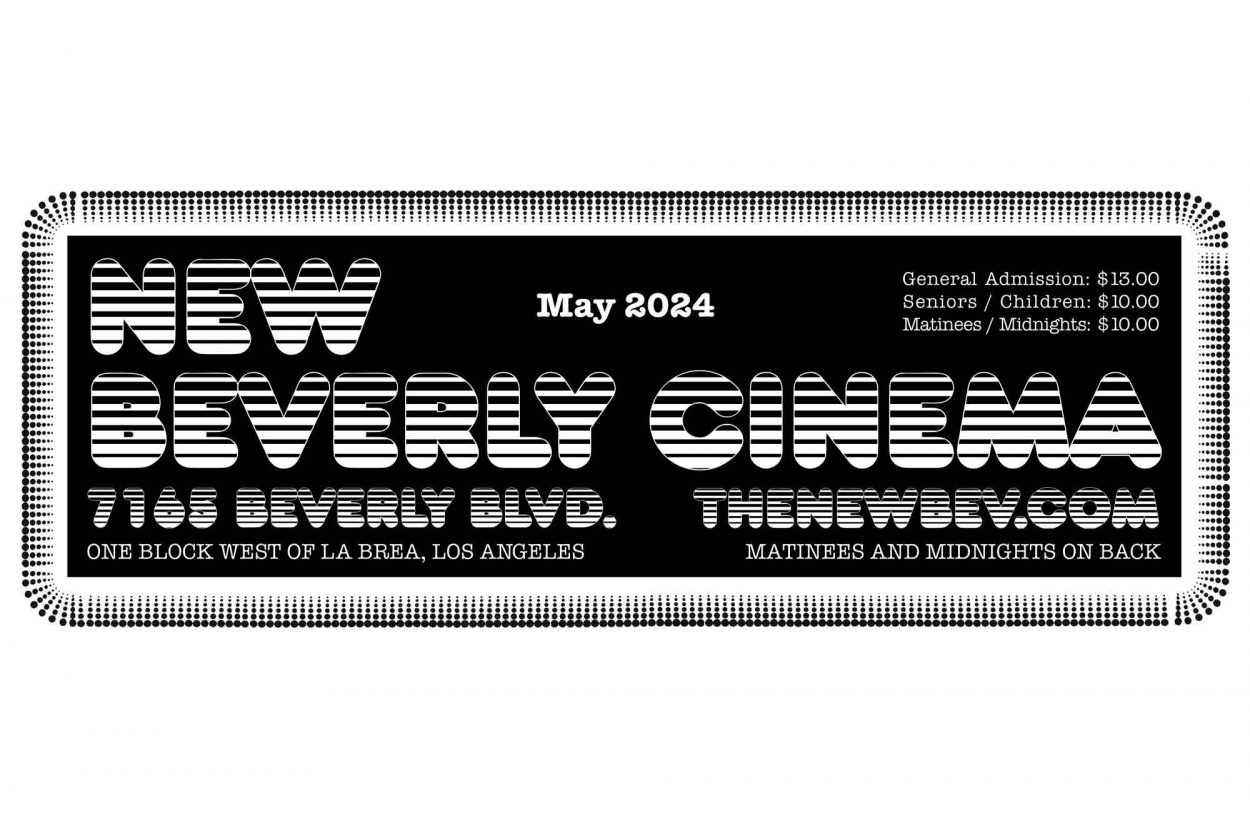The saga is well known to all good Trekkies: Star Trek was canceled on June 3rd, 1969, after flagging ratings barred the crew of the USS Enterprise from finishing their proposed five-year mission. While it was airing, Star Trek was reasonably popular but wasn’t drawing the numbers it needed to survive. Unbeknownst to the show’s producers, however, Star Trek was quietly fomenting a fan base, and when the show went into syndication, that fan base only grew. Over the course of the 1970s, Star Trek grew in cultural estimation, fans “came out” in droves, and conventions were born.
By the late 1970s, after Star Wars proved that science fiction movies could make money, there was enough cultural clout to put a brand new Star Trek TV series into production. However, behind-the-scenes troubles and contract conflicts kept the Star Trek: Phase II project in a stalemate. But it was during that struggle that the show was serendipitously mutated into the glorious 1979 feature film epic Star Trek: The Motion Picture, forever changing the direction of the franchise.
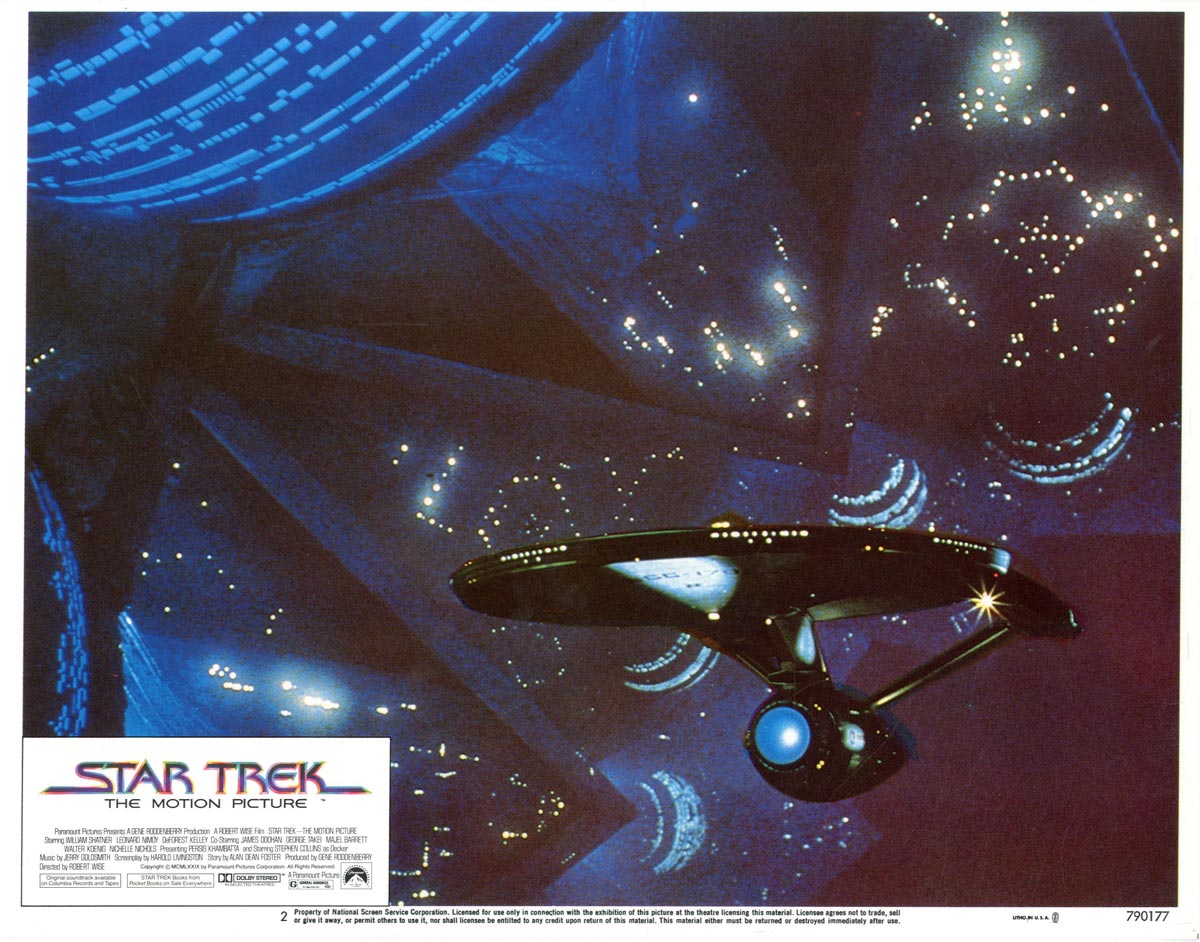
Although Star Trek is seen as a comfortably safe “franchise” these days, one needs to take a step back an acknowledge just how daring Star Trek: The Motion Picture truly was back in 1979. In addition to being based on a TV series cancelled a decade earlier, Star Trek: The Motion Picture took no cultural cues from the pervasive sci-fi trends of the time. There were no space battles, no evil robots, no brisk pacing or young, roguish characters. It was to be directed by Robert Wise, the old-guard Hollywood master behind thoughtful genre films like The Day the Earth Stood Still and The Haunting, but who also helmed well-regarded mainstream award-winners like The Sound of Music and West Side Story. This was as far from the zeitgeist-rattling Star Wars as one could possibly get without skewing directly into the super-psychedelia of something like Phase IV or 2001: A Space Odyssey.
Sci-fi audiences were, in 1979, being re-primed on pulp action, and Star Trek: The Motion Picture hoped to capture audiences by being – imagine that! – cerebral. It was intended, it seems, to be a new type of movie: the franchise-based prestige genre film.
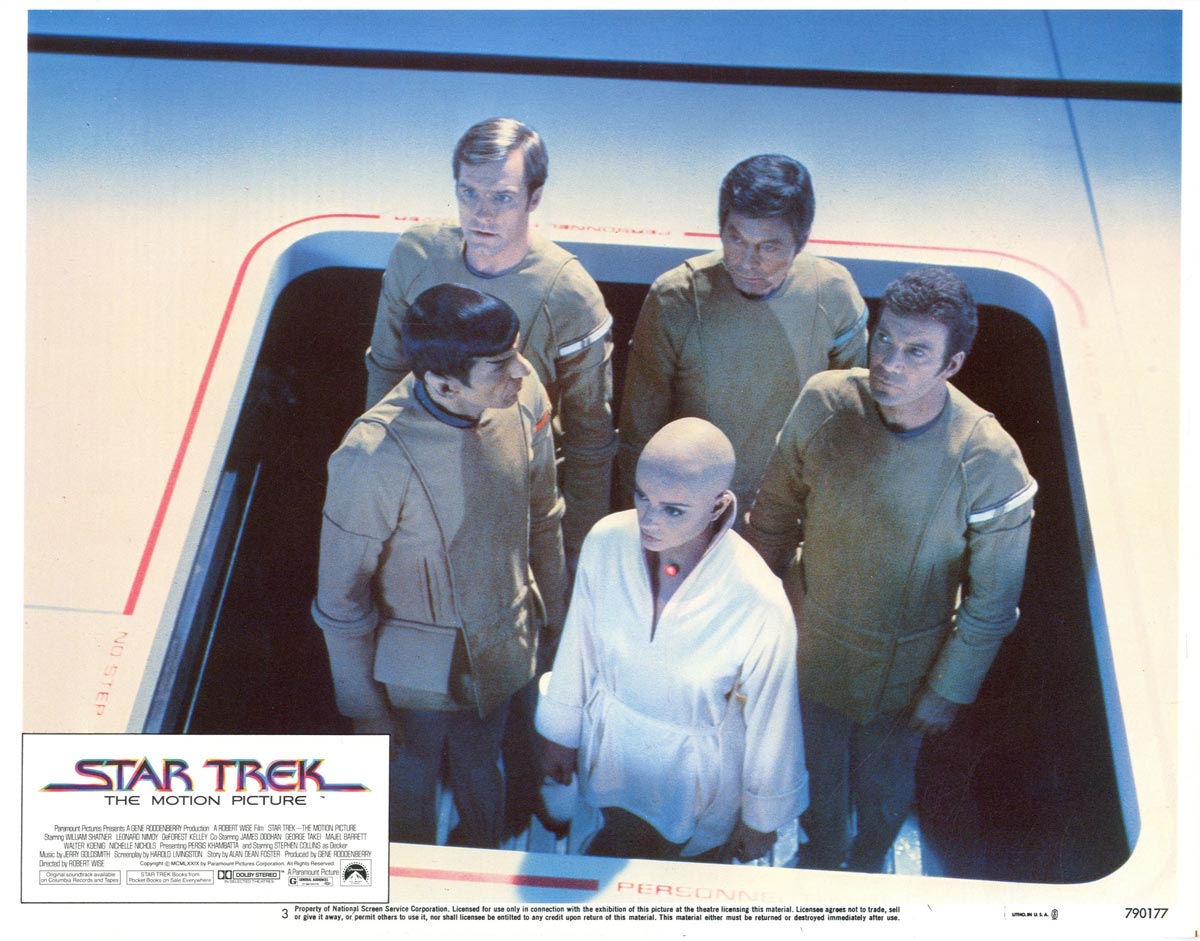
It was dimly received by critics, and only half-heartedly welcomed audiences, perhaps as a result of its blend of the high commercial and the high-falutin’. Here was a pop product that aspired to be, at least in its construct, high art. Its broadly-based sensibilities perhaps clashed with its more philosophical ambitions. As such, we have a film that, at times feels like it is neither-fish-nor-fowl, but mostly feels like one of the most ambitious sci-fi films of a generation.
Star Trek: The Motion Picture takes place a decade after the events of the TV series after Captain Kirk has been promoted to admiral, and the crew of the Enterprise has continued their careers apart from one another. When a giant destructive space cloud is discovered drifting very, very slowly toward Earth, Kirk and Co. are reassembled to command the Enterprise (to the dismay of its current captain Willard Dekker, played by the handsome Stephen Collins) and uncover what it might be. After two full hours of speculation, and after Persis Khambatta is abducted to be transformed into the cloud’s robotic ambassador, the crew discovers that the cloud is actually a massive holding facility for something astonishingly familiar. I will leave the final plot twist a mystery, although it is well-known to most science fiction fans.
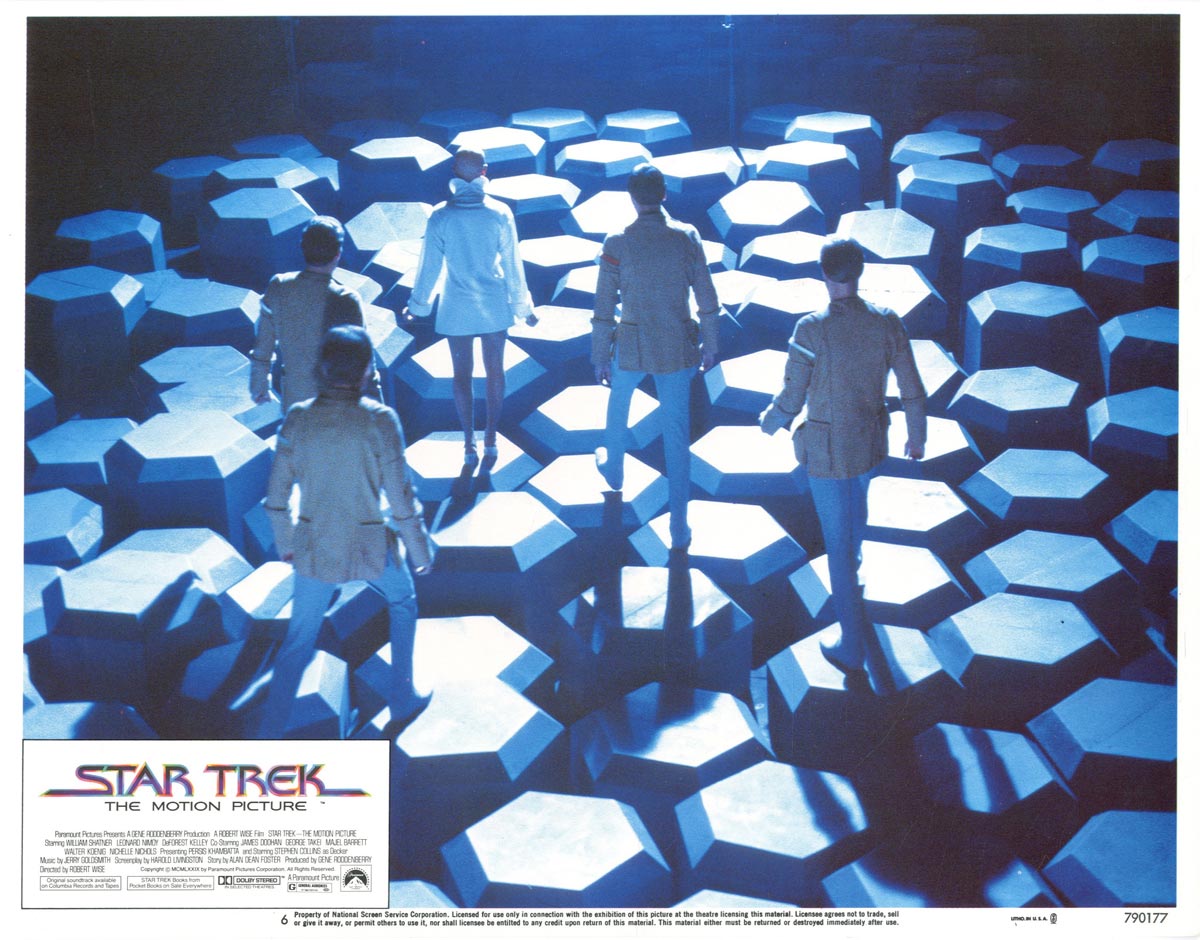
What is most notable about Star Trek: The Motion Picture, however, is its pace. The film originally ran a whopping 132 minutes, which was eventually expanded to 136 when Robert Wise was allowed to recut it for home video in 2001. Much of the film’s running time is spent with long takes of slow-moving starships, and slowly progressing through the abstract space landscape of the cloud. A lot of screen time is devoted to talking, the minutiae of starship command, the construction and function of the Enterprise itself, and general philosophizing. By the time the story actually gets going, almost an hour has already passed, and once we know the plot, we spend a good time merely floating forward.
This slowed pace, however, is consistent with the best of science fiction. Gene Roddenberry, the original creator of Star Trek, was clearly impressed with the vast infinity of the cosmos, and while the original series had its pulp elements, there was always an air of a near-spiritual, classical contemplation of INFINITY lurking underneath. Star Trek: The Motion Picture went for broke, left adventure behind, and dove straight into the eye-expanding, lobe-electrifying experience of asking cathartic Big Picture questions. Why are we here? What part does humanity play in the vastness of the astral map? And can our tiny, petty feelings of love and sex somehow spell the next steps in human evolution.
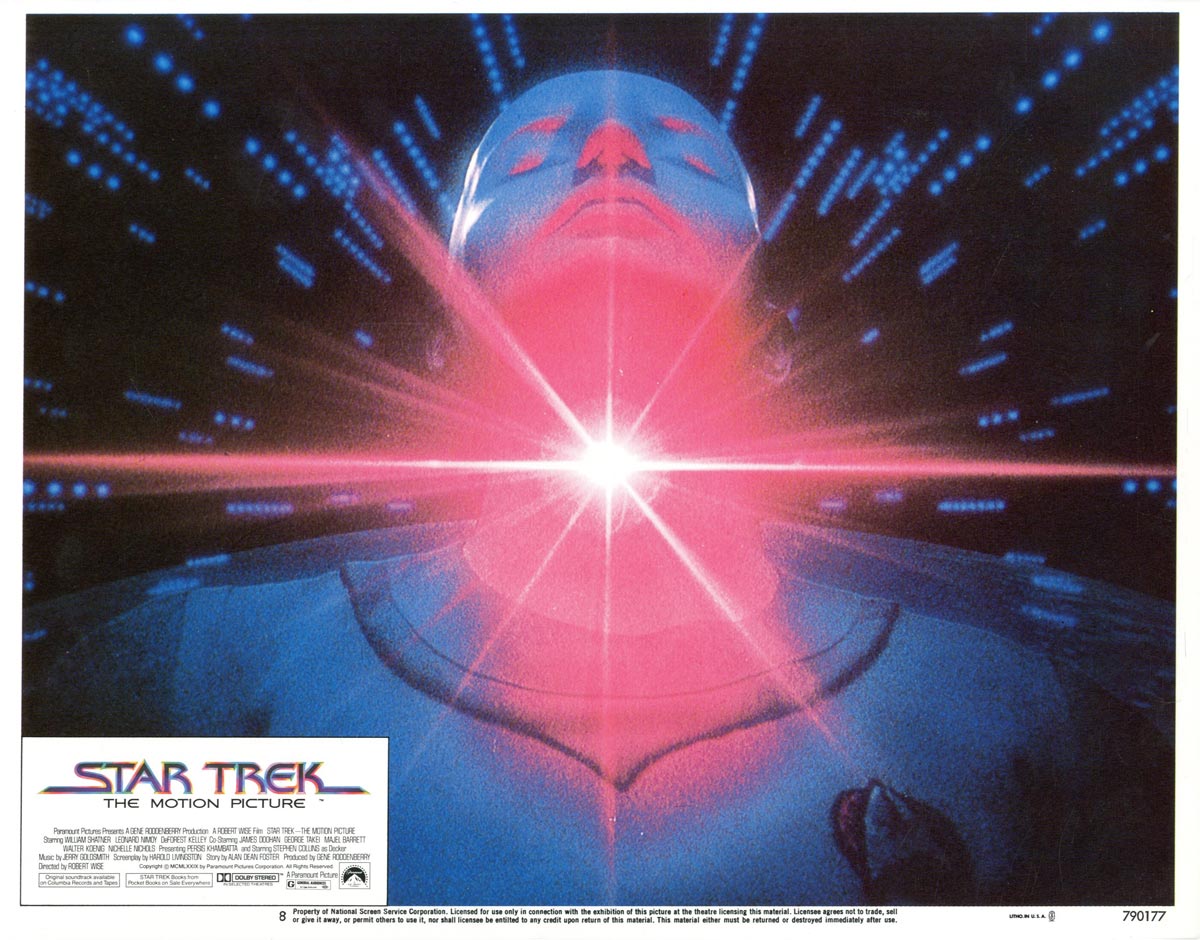
Oh yes, Star Trek: The Motion Picture is also very much about sex. Roddenberry, you see, was a hippie par excellence, and many episodes of his original show promoted free love, gentle anarchy, and sex without strings. And if you didn’t get his free love philosophy from Star Trek, check out his 1971 thriller Pretty Maids All in a Row. Gene was clearly a sex advocate.
So it should come as no surprise that Star Trek: The Motion Picture is riddled with sexual imagery. In addition to dialogue about penetrating the orifices in the cloud’s interior (and Persis Khambatta’s continuous addressing of Kirk as “Kirk unit”), the film’s (ahem) climax is more or less a consummation of a sexual act that was teased in act I. That consummation, we learn, may tie directly into human evolution, the fabric of the cosmos, and a beautiful new era of human existence. Roddenberry is equating human orgasms with cosmic synchronicity. Maybe not quite as profound as the themes of 2001: A Space Odyssey – or perhaps simply more prurient – but it’s standing in the same place, facing in the same direction.
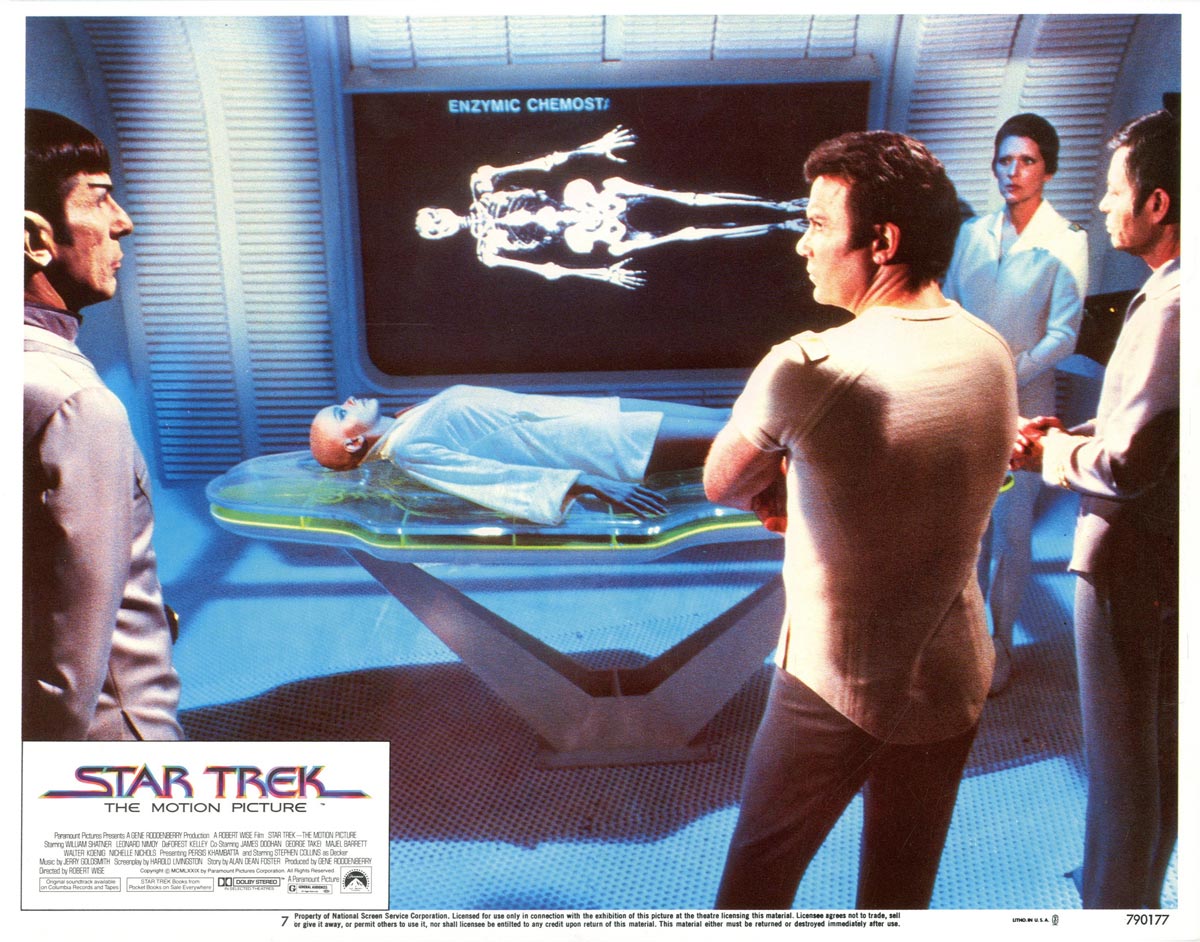
None of the multiple Star Trek motion picture sequels even attempted what the 1979 film achieved, preferring to skew more toward plot and character, and away from the heady and the philosophical. After 12 additional feature films, Star Trek slowly revealed that it’s often worked best on television, more naturally revealing its well-known themes of human diversity, moral dilemmas, and sci-fi symbolic coding of modern-day social problems.
But in 1979, cinematic Star Trek may have reached its pinnacle in terms of what Star Trek always hoped to achieve: A glorious look into a hopeful future where our understanding of infinity, our very thoughts, our intelligence as a species, and our superior devotion to peace and togetherness, all began to allow the human race to scrape against a newly discovered and vastly larger landscape of galactic citizenship.
Star Trek: The Motion Picture screens June 9 & 10.

